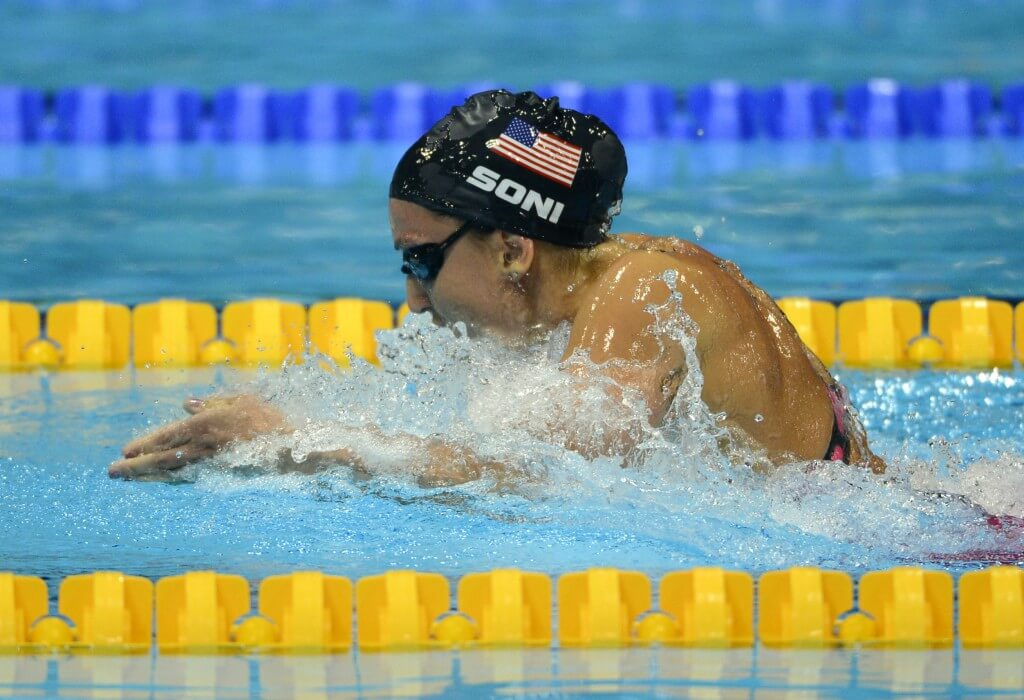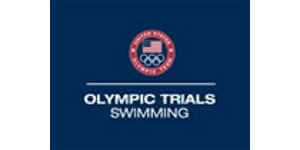Impressions of 2012 U.S. Olympic Trials

Guest editorial by John Craig
PHOENIX, Arizona, July 4. THE U.S. Olympic Trials was, as always, fascinating, with both the good and the bad performances.
Allison Schmitt is going to have two great races in London. Based on her opening 57.5 split, it’s apparent that with a more evenly paced race she is capable of a 4:00 or 4:01, which puts her squarely in Camille Muffat territory. And the women’s 200, with six or seven legitimate contenders, is going to be one of the premiere events of the Games.
It was unclear beforehand what would happen with Missy Franklin, given her middling performances this past spring and the enormous amount of publicity (and thus pressure) she has received this past year. But she handled it well, and if her freestyles were a touch slower than last year, her backstrokes were both superb.
It’s a credit to Missy and her parents that they tried so hard for her to have a “normal” teenage life this year, swimming for her high school team, going to the prom, etc. At the same time, it may not have been the ideal pre-Olympic environment. But there will be no proms at Olympic training camp, so she should be faster in London.
Both Dana Vollmer in the 100 fly and Rebecca Soni in the 200 breast have the ability to set world records, but to get them they both need to be a touch less extravagant in the early rounds. Soni was of course right when she said that it was more important to have a good race and make the team than to risk a near-suicidal pace for the sake of a possible record. But it would be gratifying to see both of them upend techsuited records.
It was obvious from the start that Ryan Lochte and Michael Phelps weren’t peaked for the meet. Phelps even had a big grin on his face after winning the 200 free in a time slower than he had gone in a Grand Prix meet a couple months earlier. Given that Phelps is such a perfectionist he frowned and shook his head after winning the 200 fly in Beijing in a world record time that didn’t meet his expectations, there’s no way he’d be smiling about a 1:45.72 in the 200 free after a full taper.
You have to admire Lochte for pursuing such an ambitious schedule, but it’s hard to imagine that he can beat a fresh Phelps in the 200 IM in London. He’ll have a tougher race to get the gold in the 200 back, with Ryosuke Irie in the field, and he’ll only have 20 minutes rest, as opposed to the 29 minutes he got before the 200 IM at Trials (that fact courtesy of John Lohn). Yes, even a somewhat tired Lochte is still practically guaranteed the silver. But by taking on the double, he’s probably ceding the gold to Phelps in the IM.
After the U.S. swept so many events at the ’76 Olympics, the IOC changed the rules to allow only two swimmers per country per event. Tyler Clary is Exhibit A as far as why this rule is unfair. The third best 400 IMer in the world deserves a shot at a medal; it’s not his fault that the two best swimmers happen to come from the same country.
There was a fair amount of talk after the men’s 100 free about how we’re not going to be competitive with the Aussies in the 400 free relay. Given which, it was striking how much faster our men were in the 50 free. The Aussies had only three men under 22 seconds in the finals, at 21.74, 21.92, and 21.94. We had five: 21.59, 21.60, 21.68, 21.78 and 21.93. The American speedsters are undoubtedly benefitting from the recent increased emphasis on dry land training. Is it possible that some of that increased strength is coming at the expense of conditioning?
Anyway, it’s too bad it’s not a 200 instead of a 400 free relay, because we’d win the former hands down.
It had always seemed that Matt Grevers hadn’t extracted the full measure of talent from his 6′ 8″ frame, but he certainly did it in Omaha with that 52.08. Camille Lacourt has swum a 52.11, but hasn’t broken 52.7 since 2010, so Grevers will definitely have momentum on his side going into London.
While the Australian Trials were basically a graveyard for comebackers (most notably Ian Thorpe, Michael Klim, and Geoff Huegill) the U.S. Trials were the promised land for a couple. Anthony Ervin, who was retired for longer than any of the Aussies, and even took up smoking while retired, shocked everybody with his series of speedy 50s, culminating in a personal best of 21.60 to make the team. Inspirational — if not quite a recommendation for youngsters to take up smoking.
(Actually, there may be a lesson there: Ervin, despite his 21.60, only went a 49.46 in the 100, which shows that no matter how talented you are — and no one is more talented than Ervin — you need to keep your lungs clean if you want to swim more than 50 meters.)
The other major successful comebacker was Brendan Hansen. It’s good to see Hansen get another shot. At the same time, it was hard to escape the feeling that he misspoke when he said that Kosuke Kitajima (who was in attendance in Omaha) could now see how hard it was to make the U.S. team. The second-place times at Japanese Trials in the breaststrokes were 59.60 and 2:08.17, both of which were faster than the winning times at U.S. Trials. (Granted, slower times made it into the semis and finals over there.)
The biggest upset of the meet was probably Scott Weltz winning the 200 breaststroke over Hansen, Eric Shanteau, and Clark Burckle.
Of the four biggest male short course stars — Tom Shields, Austin Staab, Conor Dwyer, and David Nolan — two successfully negotiated the transition to long course. Dwyer, of course, did it in the biggest way by actually making the team in two events. But Shields made a definite statement in the 100 fly, and if he’s still around four years from now, may make an even bigger statement then.
In the meantime, after he graduates from Cal, he really ought to spend a season on the World Cup circuit, because there are a host of events — including the 50s of the strokes — that he could win consistently enough to pick up the grand prize. ($100,000 isn’t a bad starting salary for a college grad in any job market, let alone the current one.)
For the women, Breeja Larson was the biggest short course star to break out. Most of the pre-Olympic form charts will now probably predict the silver for her.
The youngsters were well represented at the meet, most notably by Katie Ledecky. But Becca Mann, Kylie Stewart, Ryan Murphy, Jack Conger, Jacob Pebley, Chase Kalisz, Arthur Frayler, and many others also served notice that they will probably make bigger splashes in the future.
The best quote of the entire meet came from Natalie Coughlin, after she missed making the team in the back and fly, and before she made it as an alternate for the free relay: “I’m a little bummed, but not nearly as much as everyone is expecting me to be. I walk around the pool deck, and people act like I’m dying.”
The announcers had mentioned a couple times before that how Coughlin’s “leadership” would be missed if she didn’t make the team. Sometimes it’s hard to know exactly what people mean when they speak of that somewhat nebulous quality; all too often it’s defined in self-serving ways. But that quote from Coughlin is actually a great example of real leadership.
John Craig was a mediocre swimmer in college but is second to none in his nerdy love of the sport.




